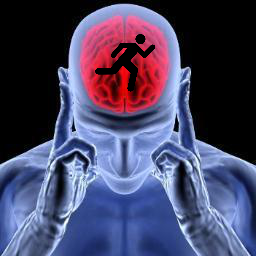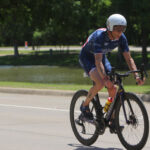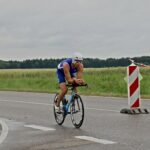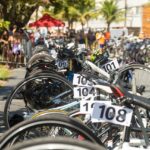 If you do anything to work on the mental side of your ski racing during this off season, it better be mental imagery. Why, you ask. Because there is no more powerful mental tool than mental imagery and it can have a huge impact on your ski racing. And here’s my challenge to you: If you’re not on an organized and consistent off-snow mental imagery program, you’re not doing everything you can to achieve your ski racing goals.
If you do anything to work on the mental side of your ski racing during this off season, it better be mental imagery. Why, you ask. Because there is no more powerful mental tool than mental imagery and it can have a huge impact on your ski racing. And here’s my challenge to you: If you’re not on an organized and consistent off-snow mental imagery program, you’re not doing everything you can to achieve your ski racing goals.
I say this with such conviction because it had that effect on me when I was a young racer at Burke Mtn. Academy. One summer I took a course at a local college that introduced me to the power of mental imagery. I applied it to my ski racing as part of my final project for the class and then continued to use it throughout the following fall and into race season. The results were nothing less than spectacular. From doubt came confidence. From distraction came focus. From anxiety came intensity. From caution came aggressiveness. From DNFs came consistency. And from decent results came the best results of my career. And I attribute my leap in performance almost entirely to mental imagery.
When I studied mental imagery in graduate school, I learned why it is so powerful. Imagery is used by virtually all great athletes and research has shown that, when combined with actual training, improves performance more than training alone. Imagery also isn’t just a mental experience that occurs in your head, but rather impacts us in every way: psychologically, emotionally, physically, technically, and tactically. Think of mental imagery as strength training for the mind.
My belief in the power of mental imagery continues to grow to this day through my work with ski racers, from juniors to Olympians. With few exceptions, racers I work with who commit to consistently using imagery off- and on-hill develop a confidence, focus, and mindset that they didn’t have before. And this new mental strength showed every time they got into the starting gate and, more importantly, when they crossed the finish line.
Keys to Quality Mental Imagery
There are four factors that impact the quality of mental imagery: perspective, control, multiple sense, and speed. You can develop each of these areas so you can get the most out of your imagery.
Imagery perspective. Imagery perspective refers to where the “imagery camera” is when you do imagery. The internal perspective involves seeing yourself from inside your body looking out, as if you were actually skiing. The external perspective involves seeing yourself from outside your body like on video. Research indicates that one perspective is not better than the other. Most people have a dominant perspective with which they’re most comfortable. Use the perspective that’s most natural for you and then experiment with the other perspective to see if it helps you in a different way.
Control. Have you ever been doing imagery and you keep making mistakes, for example, you keep leaning in or sitting back? This problem relates to imagery control, which is how well you’re able to imagine what you want to imagine. It’s not uncommon for racers to ski poorly in their imagery and it often reflects a fundamental lack of confidence in your skiing (when I started using imagery as a youth, I couldn’t go three gates in my head without hooking a tip!). If mistakes occur in your imagery, you shouldn’t just let them go by. If you do, you’ll further ingrain the negative image and feeling which will hurt your skiing. Instead, when you ski poorly in your imagery, immediately rewind the “imagery video” and edit it and rerun the imagery video until you do it correctly.
Multiple senses. Good imagery is more than just visual, that’s why I don’t like to call it visualization. The best imagery involves the multi-sensory reproduction of the actual ski racing experience. You should duplicate the sights, sounds, physical sensations, thoughts, and emotions that you would experience in an actual race. Visual imagery involves how clearly you see yourself skiing. Vivid auditory images are important because the sound of the skis on the snow, for example tells you about the snow conditions. If you get nervous before a real race, you should get nervous in your imagery.
The most powerful part of race imagery is feeling it in your body. That’s how you really ingrain new technical and mental skills and habits. A useful way to increase the feeling in your race imagery is to combine imagined and real sensations. Imagine yourself skiing and move your body with the imagined skiing. You see World Cup racers doing this during inspection and in the start area.
Speed. The ability to adjust the speed of your imagery will enable you to use imagery to improve different aspects of your skiing. Slow motion is effective for focusing on technique. When you first start to work on technique in your imagery, slow the imagery video down, frame by frame if necessary, to see yourself executing the skill correctly. Then, as you see and feel yourself skiing well in slow motion, increase the speed of your imagery until you can ski well at “real-time” speed. If your goal is to see and feel yourself skiing fast and aggressive, you can speed up your imagery.
Be Realistic in Your Imagery
Imagine realistic conditions. Imagine yourself performing under realistic conditions, in other words, always do imagery under those conditions in which you normally compete. That is, if you’re usually seeded farther back and the courses are usually chewed up, imagine yourself on rough courses. Only imagine yourself racing under ideal conditions if you typically start in the early seeds and can expect “hero” snow.
Imagine realistic skiing. If you’re a junior racer, don’t imagine yourself skiing like a World Cupper. Instead, imagine yourself skiing the way you normally ski, but incorporate positive changes into your skiing that you are working on.
Develop An Off-Snow Imagery Program (use my mental imagery workbook)
The key to effective mental imagery is consistency. You wouldn’t expect to get stronger by lifting weights once every few weeks. You wouldn’t expect to get better technically by skiing once in a while. The same holds true for mental imagery. The only way to gain the benefits of mental imagery is to use it consistently.
Set imagery goals. Set specific goals for what areas you want to work on in the off season. For example, you might focus on some technical change, being more relaxed and focused, or just going really fast and finishing.
Climb imagery ladder. Create a ladder of training and races scenarios in which you will be skiing in the upcoming season. The ladder should start with training on easy hills and progress to more demanding training situations, less important races, and increase through more important races up to the most important race in which you’ll compete next year. Then begin your imagery on the lowest level of the imagery ladder. Stay at that rung until you reach your imagery goal. When that is achieved, stay at that step for several imagery sessions to really reinforce and ingrain the positive images, thoughts, and feelings. Then work your way up the ladder until you’re skiing the way you want in your imagery at the very top of the imagery ladder.
Training- and race-specific imagery. Select training and race situations that are appropriate for your level of development. In other words, if you’re a U16, don’t imagine yourself racing in a World Cup at Wengen. Imagine yourself racing on a specific hill in a particular event in a specific race with a precise start number, for example, a Nor-Am slalom at Vail running 47th. Then select a different hill, event, and race for each imagery session, thus reaching their imagery goals on different hills and in varying events and conditions.
Imagery sessions. Imagery sessions should be done 3-4 times per week. Set aside a specific time of the day when you’ll do your imagery (just like you do for your physical training) and program alerts in your smartphone as reminders. Find a quiet, comfortable place where you won’t be disturbed. Each session should last about 10 minutes.
Imagery log. One difficulty with imagery is that, unlike physical training, the results aren’t tangible. An effective way to deal with this problem is to keep an imagery log. These logs should record key aspects of every imagery session including the quality of the imagined performance, any thoughts and feelings that occur (positive or negative), problems that emerged, and what you need to work on for the next session. Imagery log enable you to see progress in your imagery, thereby making it more rewarding. I include an imagery log in the mental imagery workbook.
Accept the Challenge
So, here’s the deal. I can’t guarantee that an off season filled with mental imagery is going to result in a quantum leap in your ski racing like it did for me so many years ago. But I will say that if you commit to a serious mental imagery program, there’s a darned good chance that you will be much better prepared mentally than you were this past winter. And if you combine the imagery program with an intensive physical conditioning regimen and quality on-snow training, then I can say with confidence that when you slide into the starting gate at your first race next winter, you’ll be able to say, “I’m as prepared as I can be to ski fast and achieve my goals.”
I have two FREE mp3 audio files that guide you through relaxation and race imagery scenarios for SL/GS and SG/DH. I also have a FREE mental imagery workbook you can use to help you create a structured imagery program.
Want to make mental training a part of your off-season training program? Take a look at my online mental training courses designed just for ski racers.
Note: This article is updated presentation of a previously published article that never gets old.
Podcast: Play in new window | Download






